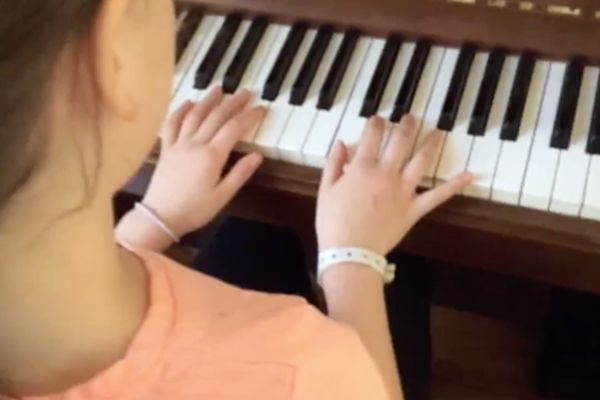Play scales
Practice playing musical scales on your instrument (piano, recorder, or keyboard). Learn finger patterns, tempo control, and clear tone through daily exercises.



Step-by-step guide to practice musical scales
One SINGLE FINGERING To Learn Piano Scales Fast: The 3 + 4 Rule - Piano Tutorial
Step 1
Sit at your instrument and adjust your seat or stand so your wrists are level and you feel comfortable.
Step 2
Place your scale chart and notebook where you can see them and put your pencil nearby.
Step 3
Turn on the metronome and set it to 60 beats per minute.
Step 4
Warm up by playing a simple five-note pattern slowly for one minute to wake up your fingers or lips.
Step 5
Choose one scale to learn today (start with C major) and look at the note order and finger pattern on the chart.
Step 6
Practice the scale with the right hand only, playing one note per metronome click and using the correct fingering.
Step 7
Practice the scale with the left hand only, playing one note per metronome click and using the correct fingering.
Step 8
Play the scale with both hands together slowly, matching each note to the metronome clicks.
Step 9
Increase the metronome by 5 to 10 BPM and play the scale two times to practice tempo control.
Step 10
Play the scale softly for two repetitions to practice a gentle clear tone.
Step 11
Play the scale loudly for two repetitions to practice a strong clear tone.
Step 12
Write one short note in your notebook about what improved and one goal for your next practice.
Step 13
Share a short description or a recording of your practice progress and your goal on DIY.org.
Final steps
You're almost there! Complete all the steps, bring your creation to life, post it, and conquer the challenge!


Help!?
What can I use instead of a metronome or a printed scale chart if I don't have them?
Use a free metronome app on a phone or tablet (or tap your foot to approximately 60 BPM) and view the scale chart on a device screen or photocopy it into your notebook while keeping your pencil nearby as the instructions say.
I'm struggling to keep both hands together in time with the metronome—what should I try?
Go back to the 60 BPM warm-up, practice the scale with right and left hands separately as steps 6–7 instruct, then play both hands together very slowly matching each metronome click before increasing speed.
How can I adapt this activity for a 5-year-old versus a 14-year-old?
For a 5-year-old, lower the metronome to about 40 BPM, shorten the warm-up to a three-note pattern and focus on single-hand repetition, while a 14-year-old can work two octaves of C major and follow the instructions to raise tempo in 5–10 BPM steps and add dynamic contrasts.
What are simple ways to extend or personalize the practice once I finish the steps?
After writing your improvement and goal in the notebook, personalize practice by recording different tempos or dynamics on your phone and uploading the best clip to DIY.org, or transpose the C major pattern to a new key and repeat the metronome increments from the instructions.
Watch videos on how to practice musical scales
How to Play Piano Scales - Easy Beginner Lesson
Facts about instrument practice for kids
⏱️ Using a metronome while practicing trains steady tempo — teachers often recommend increasing speed in small steps (like 5–10%).
🎼 Johann Sebastian Bach wrote The Well-Tempered Clavier to work through all 24 major and minor keys — a classic scale-training masterpiece for keyboardists.
🎹 Practicing scales just 5–10 minutes a day helps build finger muscle memory and smoother hand coordination.
🧠 Repeating scale patterns strengthens motor pathways in the brain, improving coordination and memory for fingerings.
🎶 Western music uses 12 pitch classes, which gives us 12 major scales to explore across the keyboard or recorder.
How do I practice musical scales with my child on piano, recorder, or keyboard?
What materials do I need to practice scales on piano, recorder, or keyboard?
What ages is practicing musical scales suitable for children?
What are the benefits of daily scale practice for kids?


One subscription, many ways to play and learn.
Only $6.99 after trial. No credit card required



